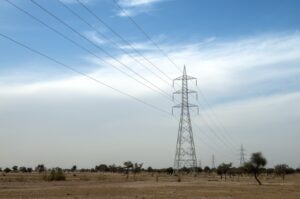Sri Lanka’s Imports rebounds to a three-month high in August
3 min read
Sri Lanka’s merchandise imports rebounded to $1.40 billion in August from historic lows of $1.289 and $.23 billion recorded in July and June due to the forex crisis.
On a Year-on-Year basis, merchandise import expenditure recorded an 11.9 percent decline.
A decline in expenditure was observed in investment goods and nonfood consumer goods, while an increase was recorded in imports of intermediate goods and food and beverages. Meanwhile, import expenditure on a cumulative basis from January to August amounted to US$ 12,801 million, which is a decline of 4.6 percent (y-o-y). However, the import expenditure is showing a tendency to increase on a month-on-month basis, since bottoming out in June, which prompted the Government to further tighten import restrictions in August in order to preserve forex for essential imports, although some of which were relaxed in September.
Consumer goods:
Expenditure on the importation of consumer goods declined by 28.7 per centin August
2022, compared to August 2021, driven by a decline in expenditure on non-food consumer goods despite an increase in expenditure on food and beverages.
The decline in import expenditure on non-food
consumer goods was observed in all subcategories, with a notable drop in imports of medical and
pharmaceuticals (mainly, vaccines), telecommunication devices (mainly, mobile telephones) and home
appliances (mainly, televisions). In contrast, expenditure on importation on food and beverages
increased by 17.2 per cent in August 2022 (y-o-y), with a substantial share of the increase being
contributed by the imports of cereals and milling industry products (primarily, rice), and sugar. However,
expenditure on dairy products (mainly, milk powder), seafood (mainly, dried and fresh fish), oils and fats
(mainly, coconut oil), vegetables (mainly, big onions) and fruits declined in August 2022, compared to
August 2021.
Intermediate goods:
Expenditure on the importation of intermediate goods increased by 2.6 percent in
August 2022, compared to August 2021, mainly driven by fuel, textiles and textile articles (mainly, fabrics)
and fertiliser (mainly, urea). Further, import expenditure on chemical products; diamonds and precious
stones and metals (primarily, industrial diamonds); paper and paperboard and articles thereof; and
rubber and articles thereof also recorded an increase during August 2022, compared to August 2021.
Meanwhile, many other types of intermediate goods recorded a notable decline, including base metals
(mainly, iron and steel), wheat and maize, agricultural inputs (mainly, animal fodder), vehicle and
machinery parts, etc. However, import expenditure on fuel, which consists crude oil, refined petroleum
and coal, increased by 10.2 per cent (y-o-y) to US$ 389 million in August 2022, and the increase
was attributed to higher average import prices despite lower import volumes of crude oil and refined petroleum. The average import price of crude oil was US$ 114.71 per barrel in August 2022,
compared to US$ 74.88 per barrel in August 2021.
Investment goods:
Import expenditure on investment goods declined by 39.5 per cent in August 2022,
compared to August 2021, resulting from a decline in all subcategories. The decline in the expenditure
on machinery and equipment imports was led by reduced import expenditure on computers, harvesting
machinery and transmission apparatus, among others. Import expenditure on building materials
decreased, mainly owing to lower imports of iron and steel (primarily, iron bars and rods), cement, and
mineral products. Meanwhile, lower importation of commercial vehicles, such as agricultural tractors
and tankers and bowsers, contributed mainly to the drop in the import expenditure on transport
equipment.
Import indices:
The import volume index declined by 23.6 percent (y-o-y), while the import unit value
the index increased by 15.4 percent, in August 2022, implying that the decline in import expenditure in
August 2022 was mainly driven by the volume effect.




